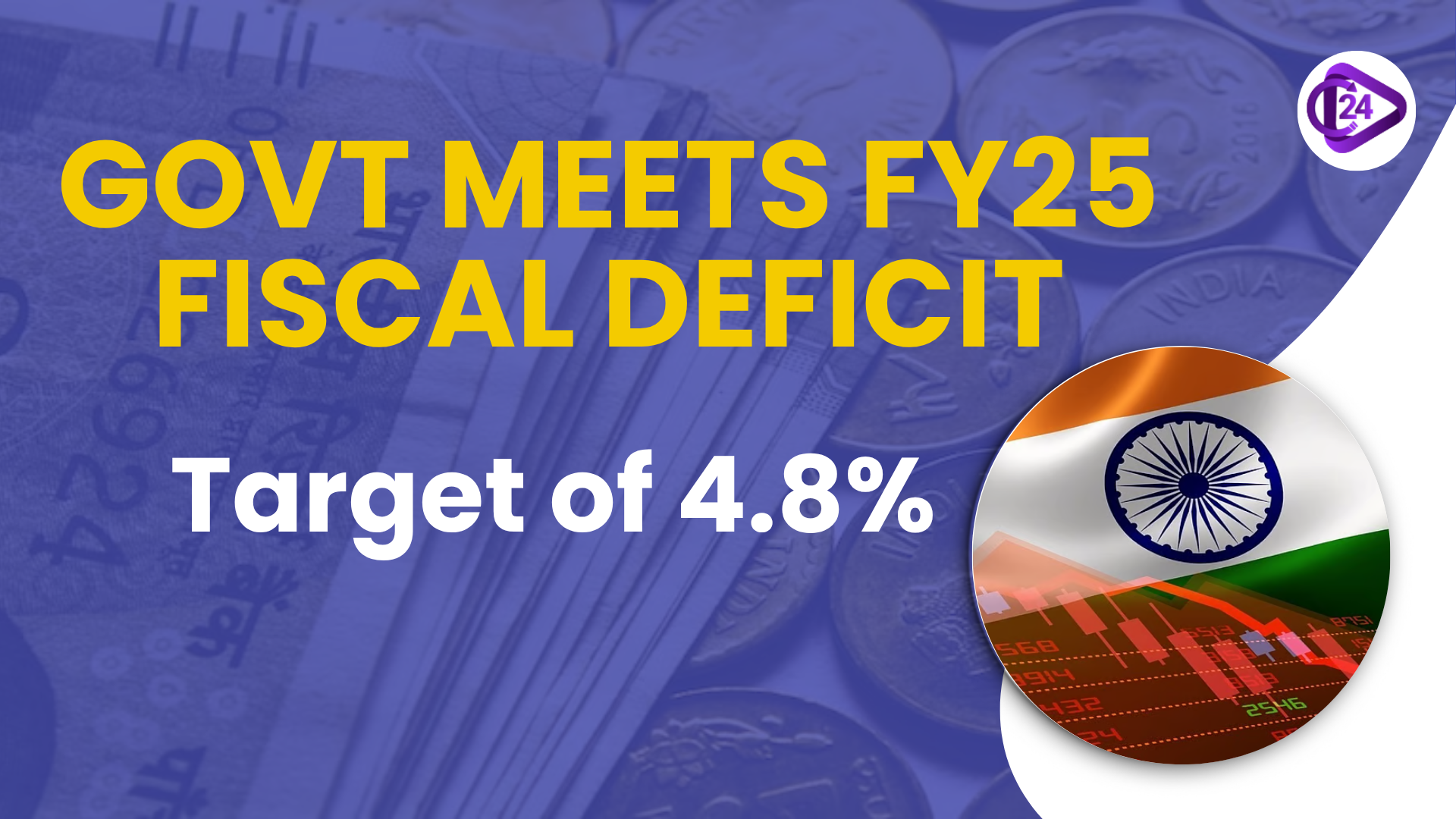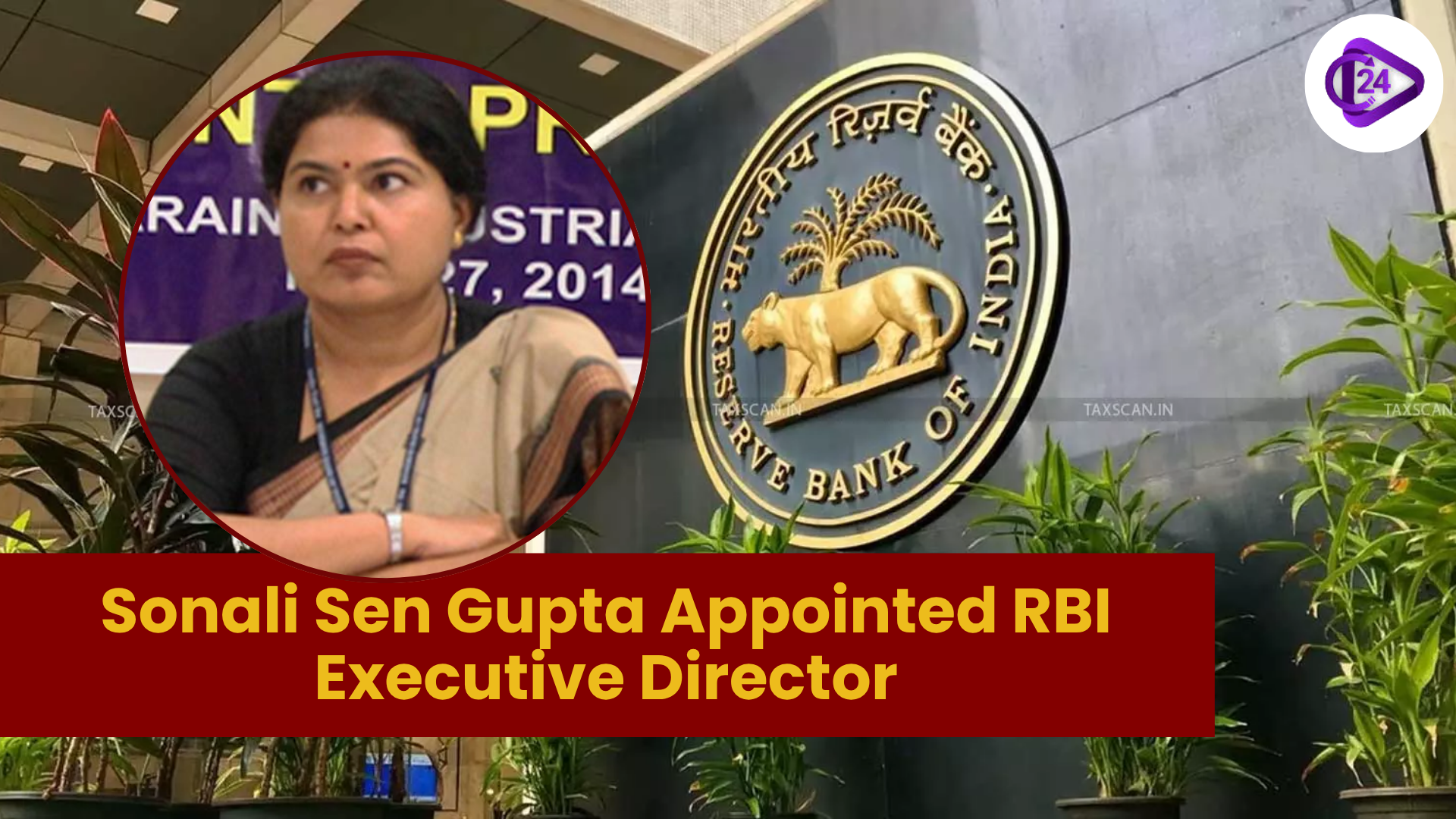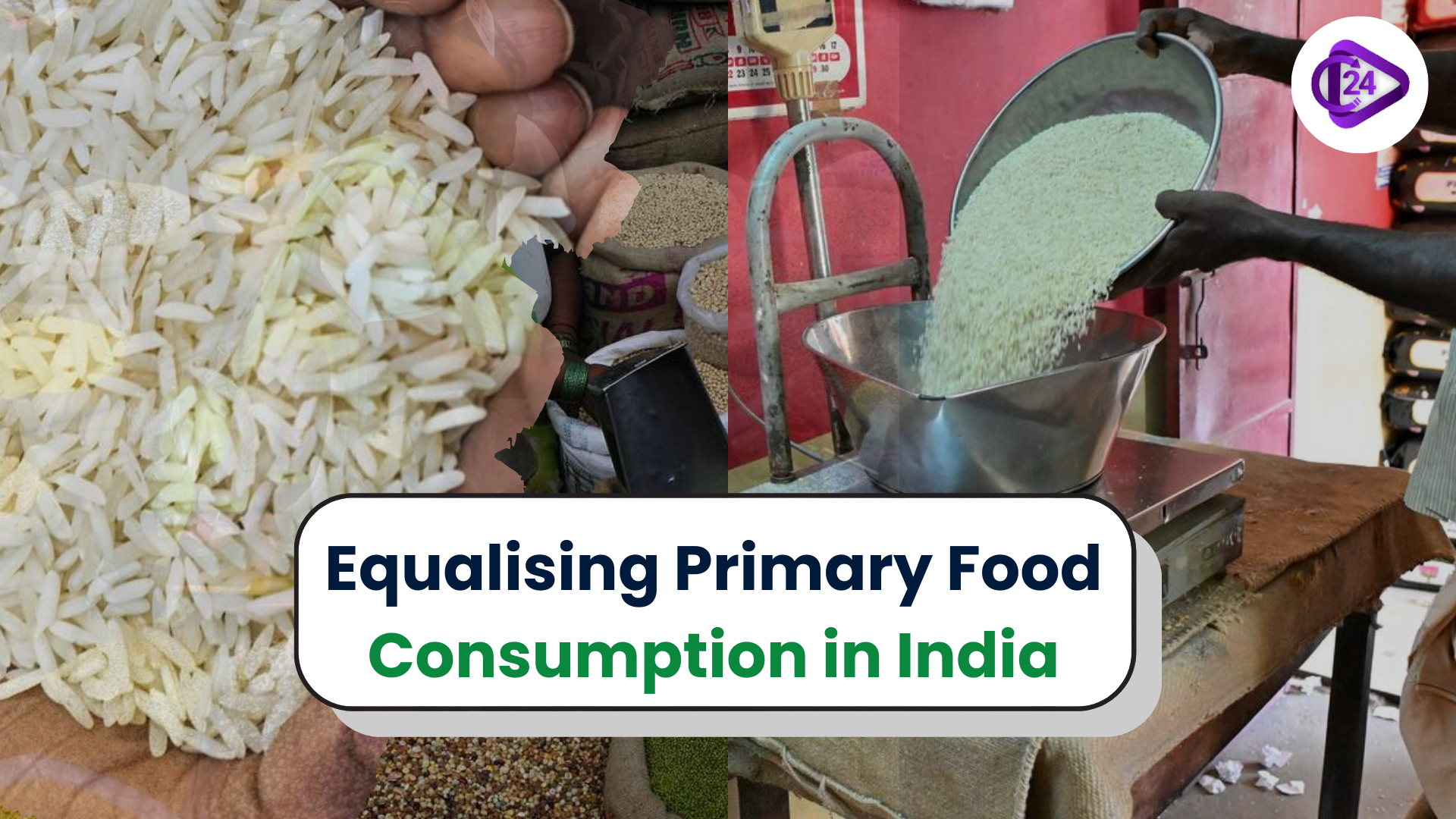
The Government of India achieved its fiscal deficit goal of 4.8% of GDP for financial year 2024-25 as per preliminary data from the Controller General of Accounts. Fiscal responsibility was upheld despite total revenue being lower than expected, mainly because of missing capital receipts and less tax money. Total spending and total revenue by the government were roughly equal to 97.8% of what was set in the revised budget. The government plans to gradually cut the deficit to 4.4% of the GDP in the financial year 2025-2026.
Context
-
Government meets fiscal deficit goal of 4.8%
-
Despite reduced revenue, India fulfilled the fiscal deficit goal of 4.8% of GDP in FY25.
-
Income tax collections were down by 6%, but corporate tax collections came in above the targets.
-
Key Points
-
Fiscal Deficit and Expenditure
-
For FY25, the fiscal deficit came to ₹15.77 lakh crore or 4.8% of GDP.
-
A total of ₹46.55 lakh crore (97.8%) was spent for the year which was slightly greater than the budgeted amount.
-
Total revenue amounted to ₹30.78 lakh crore (97.8% of the estimated figure).
-
-
Revenue Shortfalls:
-
Money received from miscellaneous capital resources (such as disposals from investments) added up to ₹17,202 crore, sharing just about half (52.1%) of the target for the year.
-
Disinvestment Earnings: ₹10,131.32 crore
-
Revenue from income taxes: ₹11.83 lakh crore which is about 6% less than what was forecasted by the government.
-
Corporate Taxes: ₹9.87 lakh crore in corporate taxes which was just 0.7% more than the government estimated.
-
-
Plan for Fiscal Consolidation
-
The Finance Minister aims for the fiscal deficit to decrease again, going down to 4.4% of GDP in FY26.
-
The government is making sure not to raise spending too much above income.
-
About Fiscal Deficit
What does Fiscal Deficit mean?
-
When the government spends more money than it makes, through expenses and revenue (and excluding loans), there is a fiscal deficit.
-
It shows how much debt the government has to incur to pay its bills.
-
Simple Definition:
-
Fiscal deficit = Total Expenditure – Total Receipts (excluding borrowings)
-
Formula of Fiscal Deficit
-
Fiscal Deficit = (Revenue Expenditure + Capital Expenditure) – (Revenue Receipts + Recoveries of Loans + Non-Debt Capital Receipts)
Alternate Form (used in budget documents):
-
Fiscal Deficit = Total Expenditure – Total Revenue (excluding borrowings)
-
It is generally expressed as a percentage of GDP to assess the size of deficit relative to the economy.
Components of Fiscal Deficit
|
Component |
Details |
|
Revenue Receipts |
Tax revenue (GST, income tax, etc.) + Non-tax revenue (dividends, interest) |
|
Capital Receipts |
Recoveries of loans + Disinvestment proceeds (excluding borrowings) |
|
Expenditure |
Revenue expenditure (salaries, subsidies, etc.) + Capital expenditure (infrastructure, asset creation) |
How is Fiscal Deficit Financed?
|
Source |
Explanation |
|
Borrowing |
From market, commercial banks, foreign sources (like IMF, World Bank) |
|
Deficit Financing |
Borrowing from RBI in exchange for government securities (RBI prints new currency) |
Formula: Total borrowing = Fiscal deficit for the year
The main framework behind India’s Fiscal Policy
-
A Finance Commission is set every 5 years to advise on how to divide funds between the Centre and the States.
-
Tax rates and government spending are announced in the Union Budget by the proposal must be approved by the Parliament.
-
FRBM Act, 2003 requires the government to act fiscally responsible and to bring down its deficits over time.
-
Plans are in place for the fiscal deficit to be 4.4% of GDP in the 2025-26 financial year.
Fiscal Deficit vs Revenue Deficit
|
Feature |
Fiscal Deficit |
Revenue Deficit |
|
Definition |
Excess of total expenditure over total receipts (excluding borrowings) |
Excess of revenue expenditure over revenue receipts |
|
Formula |
Total Expenditure – Total Receipts (excl. borrowings) |
Revenue Expenditure – Revenue Receipts |
|
Indicates |
Government’s borrowing requirement |
Government’s inability to meet routine expenses with revenue |
|
Nature |
Includes both revenue and capital expenses |
Only revenue transactions involved |
|
Implication |
Indicates overall fiscal imbalance |
Indicates operational inefficiency |
Conclusion:
Hitting the fiscal deficit goal even with revenue collection problems shows the government’s determination to keep its fiscal and economic situation stable. There are areas, as shown by lower revenue from income tax, where states should strengthen their plans for bringing in income. Keeping on the consolidation path is key for the economy to grow sustainably and for investors to be confident.
UPSC Prelims Practice Question
Q.1 Let’s examine the statements given on India’s finances and GDP in the upcoming FY 2024-25:
-
The growth of India’s GDP in FY25 was the biggest since the pandemic year of 2020-21.
-
The 4.8% fiscal deficit was met in spite of revenue not meeting its mark.
-
Growth in the manufacturing sector was greater than growth in construction during Q4 FY25.
-
Cash taken from corporate taxes was not as much as authorities projected in FY25.
Which of the above statements are correct?
A) 2 only
B) 1 and 3 only
C) 2 and 4 only
D) 1, 2 and 3 only
UPSC Mains Practice Question (GS Paper III)
Q. “Even though the fiscal deficit was reached in FY2024–25, slow growth in the Indian economy is caused by imbalances within sectors and difficulties from the world outside.”
Comment on the economic impact the current trend has on India’s economy in the next few years and put forward advice on achieving fiscal stability with the same growth strategy. (250 Words)



 8th Pay Commission 2025: Latest News, Salary Hike & DA Update
8th Pay Commission 2025: Latest News, Salary Hike & DA Update Sonali Sen Gupta Takes Charge as RBI Executive Director
Sonali Sen Gupta Takes Charge as RBI Executive Director Shram Shakti Niti 2025: India’s Future-Ready Labour Policy for Employment Growth
Shram Shakti Niti 2025: India’s Future-Ready Labour Policy for Employment Growth Secure UPI Transactions: RBI and NPCI Introduce Biometric Authentication
Secure UPI Transactions: RBI and NPCI Introduce Biometric Authentication Shirish Chandra Murmu Appointed as RBI Deputy Governor
Shirish Chandra Murmu Appointed as RBI Deputy Governor India and Australia Sign Mutual Recognition Arrangement (MRA) for Organic Products
India and Australia Sign Mutual Recognition Arrangement (MRA) for Organic Products Cabinet Approves Rs. 69,725 Crore Package for India’s Maritime Growth
Cabinet Approves Rs. 69,725 Crore Package for India’s Maritime Growth Satellite Internet in India 2025: Bridging the Digital Divide
Satellite Internet in India 2025: Bridging the Digital Divide Equalising Primary Food Consumption in India: PDS & Nutrition Gaps
Equalising Primary Food Consumption in India: PDS & Nutrition Gaps Humanities as a Cornerstone of Ethical Progress in a Market-Driven World
Humanities as a Cornerstone of Ethical Progress in a Market-Driven World






